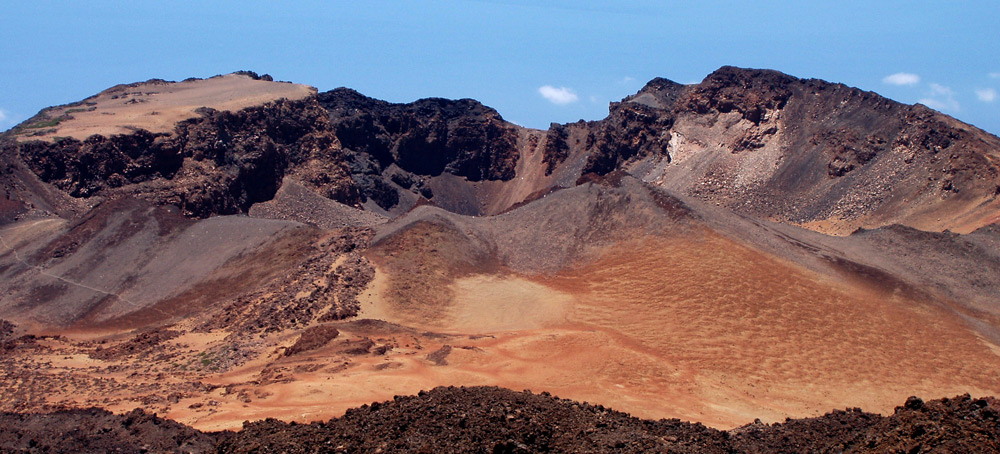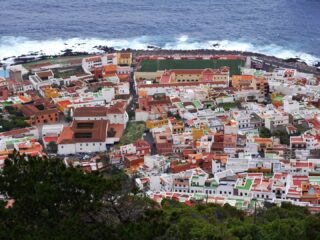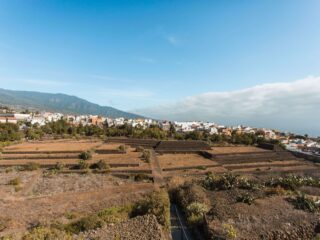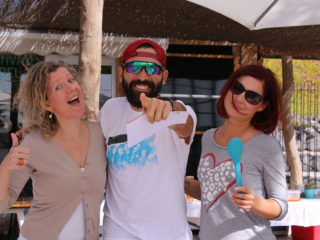Mention volcanoes and what do many people visualise? Possibly an angry mountain spewing out rivers of molten lava and turning the skies black with billowing clouds of gloomy smoke.
The eruption of Eyjafjallajökull (I’m sure somebody called me that in a Govan pub once) in Iceland and the subsequent havoc caused by its clouds of ash have helped reinforce the idea that volcanoes are malignant giants whose purpose is ultimately one of wanton destruction.
It’s no wonder that our forefathers believed that they were the homes of gods with particularly unstable temperaments.
And yet every time I turn that corner on the road between Tacoronte and El Sauzal and “˜El Teide’ looms larger-than-life on the horizon, dwarfing the Orotava Valley, the overwhelming emotion I feel is not one of nervous anxiety; it’s one of wondrous awe at living in the shadow of such an iconic wonder of the world.
El Teide is one of the factors that make Tenerife unique and other Canary Islands are only too aware of this. On La Gomera, they claim that the most outstanding views of Teide are from their island and publicity for hotels on La Gomera make the most of their vistas of the “˜majestic’ mount.
Tenerife unique and other Canary Islands are only too aware of this. On La Gomera, they claim that the most outstanding views of Teide are from their island and publicity for hotels on La Gomera make the most of their vistas of the “˜majestic’ mount.
But distant views don’t quite compare with actually standing on the spot where Tenerife’s original Guanche inhabitants believed the earth held up the sky. As a tourist magnet, Mount Teide has a strong gravitational pull. Millions are attracted to its other worldly terrain annually and Hollywood chose it as a stand in for Ancient Greece for the blockbuster movie Clash of the Titans. Teide National Park also has the distinction of being a UNESCO World Heritage Site and the mountain itself is one of sixteen volcanoes in the world designated as Decade Volcanoes.
What Are Decade Volcanoes?
This is a good news, bad news sort of scenario. Being classified as a Decade Volcano by the International Association of Volcanology and Chemistry of the Earth’s Interior (IAVCEI) adds another prestigious title to Mount Teide’s collection ““ good news. To be classified a Decade Volcano, a volcano must have an explosive history and be located very close to centres of human population ““ potentially bad news.
Other Decade Volcanoes include Colima in Mexico (ongoing eruptions since 2001); Santa MarÃa, Guatemala (ongoing eruptions since 2003 and whose worst eruption in 1902 killed up to 6,000 people); Vesuvius, Italy (the one that destroyed Pompeii) and Unzen, Japan (15,000 people killed in an eruption in 1792).
Compared to them, Mount Teide seems like a slumbering baby whose occasional awakenings have generally been little more than worrying inconveniences.
Eruptions on Tenerife
- 1492 ““ Columbus sailed the ocean blue and stopped off at La Gomera on his way to discover America possibly because El Teide was throwing a hissy fit.
- 1704 ““ Siete Fuentes erupts.
- 1705 ““ Montaña Fasnia and Montaña Arenas both erupt.
- 1706 ““ The most famous eruption on Tenerife. Montaña Negra blows its top, takes out Garachico’s harbour and ends the town’s role as Tenerife’s main port.
- 1798 ““ Chahorra erupts.
- 1909 ““ Chinyero joins the party and sends streams of lava towards villages in the Santiago del Teide Valley where it stops metres from Las Manchas thanks to the intervention of a saint; so they say locally.
And since then nada. There have been occasional  rumblings over the years and Spanish Scientist Dr Alicia Garcia caused an eruption of a different kind in 2009 when she didn’t choose her words particularly well by implying that Teide was primed and ready to blow at any moment, prompting an understandably angry reaction from the Tenerife government. But for the moment the giant continues to remain tranquilo.
rumblings over the years and Spanish Scientist Dr Alicia Garcia caused an eruption of a different kind in 2009 when she didn’t choose her words particularly well by implying that Teide was primed and ready to blow at any moment, prompting an understandably angry reaction from the Tenerife government. But for the moment the giant continues to remain tranquilo.
So What Will Happen if Teide Erupts Again?
With impeccable timing, given the events taking place in Iceland, the Commission of Cities and Volcanoes (CaV) and the International Association of Volcanology and Chemistry of the Earth’s Interior (IAVCEI) are co-hosting the COV6 ““ Tenerife 2010 conference in Puerto de la Cruz at the end of this month.
COV stands for “˜Cities on Volcanoes’ and the conference aims to bring together geoscientists working on active volcanoes, authorities, civil protection specialists, city planners, social scientists, economists, psychologists, educators, health specialists, engineers, mass media and general members of communities living near active volcanoes to discuss how to improve volcanic risk management in densely populated volcanic regions.
In laymen’s terms that means devising strategies so that you and I don’t end up running hell for leather down a street with our pants on fire and a stream of molten lava hot on our tails. Sounds like a damn good reason for a conference to me.
Looking for Private Excursions in Tenerife – check out Guided VIP Tours
COV6 Fact file:- The conference runs from May 31 to June 4 and includes field trips and sessions covering topics ranging from the science of volcanoes, crisis management of volcanic eruptions and the risks and opportunities that come from living near an active volcano.










Comments are closed.